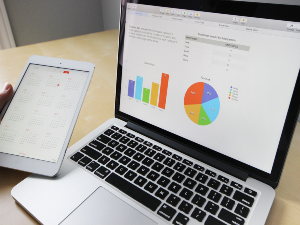
Data visualization, a blend of utility and artistry, empowers businesses to express objectives, analytics, and more in visually compelling ways. We are naturally programmed to recognize patterns within data clusters. So, presenting data in an easily digestible, colorful, and intuitive graphical format is significantly more impactful than dense text blocks.
As businesses in the Austin, Round Rock, and Georgetown, Texas areas navigate the realm of data, data visualization has the potential to elevate data-driven decision-making. Here's how to leverage this valuable tool effectively.
Understanding Data Visualization
Data visualization is essentially a process of transforming raw data into engaging graphics. These might include graphs, charts, vector images, videos, or gifs. Visualized data streamlines the interpretation process, helping viewers draw faster, more accurate conclusions.
Imagine you're staring at a lengthy list of profit percentages. It's up to you to organize the data, determine whether the business increased or decreased its profits, and double-check your math to verify your conclusion. Now imagine having all this information visually represented in a simple chart or video. The upward or downward trend becomes instantly clear, no calculations needed.
Top Data Visualization Tools
Designing high-quality, engaging data graphics might seem like a task for graphic designers, but it's not. With numerous digital tools available, creating visually appealing data representation has become straightforward.
Prominent tools include Google Charts, Infogram, Tableau, Qlik, Wrapper, and ChartBlocks. While some require a subscription, others provide free features, making them accessible to everyone.
Creating Effective Data Visualization
To begin with data visualization, first gather the data that you intend to communicate. This could be anything from profits per franchise location, social media analytics of an ad campaign, customer satisfaction surveys, or project completion times after new software implementation.
Then decide on the type of visual representation. The key is to select a format that’s instinctive and quickly comprehensible to the viewer. For instance, to present profits for different franchise locations, a bar graph comparing current and past earnings can be more effective than a pie chart.
Leveraging Data Visualization for Informed Decision-making
The critical role of data visualization is its capacity to drive informed decision-making. Referring to the franchise profits example, visual data can help company executives assess the performance of each franchise, informing crucial staffing decisions.
A comparative graph showing profits for each location makes it easy to spot underperformers. Any location not meeting or exceeding the previous year's profits could then be identified for further review. Here, data visualization simplifies complex data, assisting management in formulating strategic actions to achieve the company's profit growth objectives.
In conclusion, data visualization is a powerful tool for businesses seeking to simplify data interpretation and enhance decision-making processes. With the right approach and tools, you can turn complex data into understandable, actionable insights.
